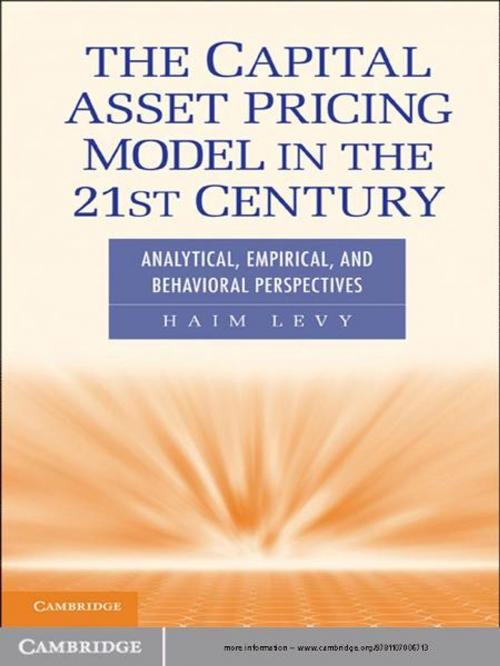The Capital Asset Pricing Model in the 21st Century
Analytical, Empirical, and Behavioral Perspectives
Business & Finance, Finance & Investing, Finance, Nonfiction, Science & Nature, Mathematics| Author: | Haim Levy | ISBN: | 9781139179744 |
| Publisher: | Cambridge University Press | Publication: | October 30, 2011 |
| Imprint: | Cambridge University Press | Language: | English |
| Author: | Haim Levy |
| ISBN: | 9781139179744 |
| Publisher: | Cambridge University Press |
| Publication: | October 30, 2011 |
| Imprint: | Cambridge University Press |
| Language: | English |
The Capital Asset Pricing Model (CAPM) and the mean-variance (M-V) rule, which are based on classic expected utility theory, have been heavily criticized theoretically and empirically. The advent of behavioral economics, prospect theory and other psychology-minded approaches in finance challenges the rational investor model from which CAPM and M-V derive. Haim Levy argues that the tension between the classic financial models and behavioral economics approaches is more apparent than real. This book aims to relax the tension between the two paradigms. Specifically, Professor Levy shows that although behavioral economics contradicts aspects of expected utility theory, CAPM and M-V are intact in both expected utility theory and cumulative prospect theory frameworks. There is furthermore no evidence to reject CAPM empirically when ex-ante parameters are employed. Professionals may thus comfortably teach and use CAPM and behavioral economics or cumulative prospect theory as coexisting paradigms.
The Capital Asset Pricing Model (CAPM) and the mean-variance (M-V) rule, which are based on classic expected utility theory, have been heavily criticized theoretically and empirically. The advent of behavioral economics, prospect theory and other psychology-minded approaches in finance challenges the rational investor model from which CAPM and M-V derive. Haim Levy argues that the tension between the classic financial models and behavioral economics approaches is more apparent than real. This book aims to relax the tension between the two paradigms. Specifically, Professor Levy shows that although behavioral economics contradicts aspects of expected utility theory, CAPM and M-V are intact in both expected utility theory and cumulative prospect theory frameworks. There is furthermore no evidence to reject CAPM empirically when ex-ante parameters are employed. Professionals may thus comfortably teach and use CAPM and behavioral economics or cumulative prospect theory as coexisting paradigms.















